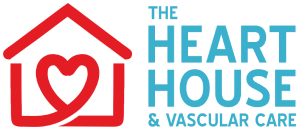Understanding Chronic Venous Insufficiency (CVI)
Chronic Venous Insufficiency (CVI) is a vascular condition that arises when the veins in the legs struggle to effectively transport blood back to the heart against gravity, resulting in blood pooling in the veins.
What You Should Know:
Under normal circumstances, the veins in the legs rely on one-way valves and muscle contractions to propel blood upwards and prevent backflow. With CVI, these valves become damaged or dysfunctional, often due to age, blood clots, inflammation, or injury.
Faulty valves allow some oxygen-depleted blood to flow backward and pool in the veins, especially when standing or sitting. This venous reflux increases blood pressure and further taxes the damaged valves.
Over time, the vein walls and valves weaken, and the veins become swollen, enlarged, and tortuous – a condition known as varicose veins. Varicose veins have a greater tendency to twist, which can worsen blood flow. All of these factors promote the progression of chronic venous insufficiency (CVI).
Could PAD be Affecting Your Legs?
Take Our Free Online Assessment to Find Out
Patients who are at risk for developing CVI are often also at risk for peripheral artery disease (PAD) because the two conditions share a few common risk factors. The conditions may also compound one another, which is why comprehensive screening and prevention are important. If you are experiencing symptoms of CVI or feel that you are at risk for PAD, our easy-to-use online self-assessment tool can help determine your PAD risk and if you should schedule a consultation with a vascular specialist to discuss further testing.
Causes & Symptoms of
Chronic Venous Insufficiency
The underlying cause of chronic venous insufficiency (CVI) is damage to the valves in the veins of the legs. These valves help to keep blood flowing in the correct direction, from the legs back to the heart. When the valves are damaged, blood can pool in the legs, leading to CVI.
Causes of Chronic Venous Insufficiency
- Age
The risk of CVI increases with age. The valves in the veins of the legs become weaker and less elastic over time, making them more likely to be damaged.
- Genetics
People with a family history of CVI are more likely to develop the condition. This is because they may have inherited genes that make them more susceptible to leg vein valve damage.
- Pregnancy
During pregnancy, hormonal changes and increased pressure on the veins of the legs can damage the valves. The weight of the baby and the uterus can put extra pressure on the veins in the legs, making it harder for blood to flow back to the heart.
- Obesity
Excess weight puts extra pressure on the veins of the legs, which can damage the valves.
- Prolonged standing or sitting
When you stand or sit for long periods of time, the blood in your legs has a harder time flowing back to your heart. This can damage the valves in the veins of your legs.
- Deep vein thrombosis (DVT)
A blood clot in a deep vein in the leg can damage the valves in the vein. A blood clot can form in a deep vein of the leg when blood flow is slowed down. This can happen if you sit or are immobilized for long periods of time or if you have a condition that makes your blood more likely to clot.
Symptoms of Chronic Venous Insufficiency
- Leg swelling
This is the most common symptom of CVI. The swelling is usually worse in the ankles and feet, and it may be worse after standing for long periods of time.
- Leg pain
The pain is often described as a dull ache or heaviness in the legs. It may be worse after standing for long periods of time or after exercise.
- Varicose veins
Varicose veins are enlarged, twisted veins that are visible just under the skin. They are a common symptom of CVI, but not everyone with CVI has varicose veins.
- Skin changes
The skin around the ankles and feet may become discolored, itchy, or flaky. In some cases, skin ulcers may develop.
- Restless legs syndrome
This is a condition that causes an irresistible urge to move your legs. It is often worse at night.
- Leg cramps
Painful muscle cramps, particularly during the night.
Testing & Diagnosis for
Chronic Venous Insufficiency
Diagnosing Chronic Venous Insufficiency (CVI) involves a combination of clinical evaluation, medical history assessment, and specialized tests. A thorough diagnosis is essential to determine the extent of the condition and its underlying causes and to tailor an effective treatment plan. Schedule a consultation with a vascular specialist to discuss our treatment offerings for CVI. Testing options may include:
- Doppler Ultrasound
This non-invasive imaging technique uses sound waves to create detailed images of blood flow in the veins. Doppler ultrasound can identify blood flow abnormalities, valve dysfunction, and the extent of venous insufficiency.
- Venous Reflux Study
This specialized ultrasound assesses the direction and speed of blood flow in the veins. It helps identify any backward flow of blood (reflux) caused by valve dysfunction.
- Venogram
In some cases, a venogram may be recommended. This involves injecting a contrast dye into a vein and taking X-ray images to visualize blood flow and any blockages.
- Duplex Ultrasound
Combining traditional ultrasound with Doppler ultrasound, this test provides detailed images of blood flow and structure, assisting in evaluating the severity of CVI and guiding treatment decisions.
- Other Imaging
Magnetic resonance venography (MRV) or computed tomography venography (CTV) might be used to assess deep veins in complex cases.
Treatment Planning for
Chronic Venous Insufficiency
Your vascular specialist will determine the best treatments tailored to your individual case, symptoms, and vein anatomy. The goal is to prevent symptom progression, such as the development of leg ulcers.
Conservative treatments for CVI may include:
- Lifestyle changes, such as diet and exercise
- Compression stockings
- Medications, such as diuretics or anticoagulants to reduce swelling
- Skincare to properly clean and treat any leg ulcers
If your condition does not respond to conservative treatments, more invasive techniques may be recommended, such as:
Vein Ablation:
This procedure uses heat energy (usually radiofrequency or laser) inside the diseased vein to seal it shut and close it off. In doing so, blood is redirected to healthier veins.
Sclerotherapy:
This procedure involves injecting a chemical irritant (sclerosant) into the abnormal vein to damage the lining and cause it to scar and close, thus sealing the vein and redirecting blood flow to healthier veins.
Phlebectomy:
This is a minimally invasive procedure that removes varicose veins through small micro-incisions.
Photo Gallery
Video Gallery
Testimonials
Photo Gallery
Risks if Left Untreated
Get To Know Our Cardiovascular Specialists
In Search of Care? Request a Consultation Today


 Fax: 856-547-5337
Fax: 856-547-5337
